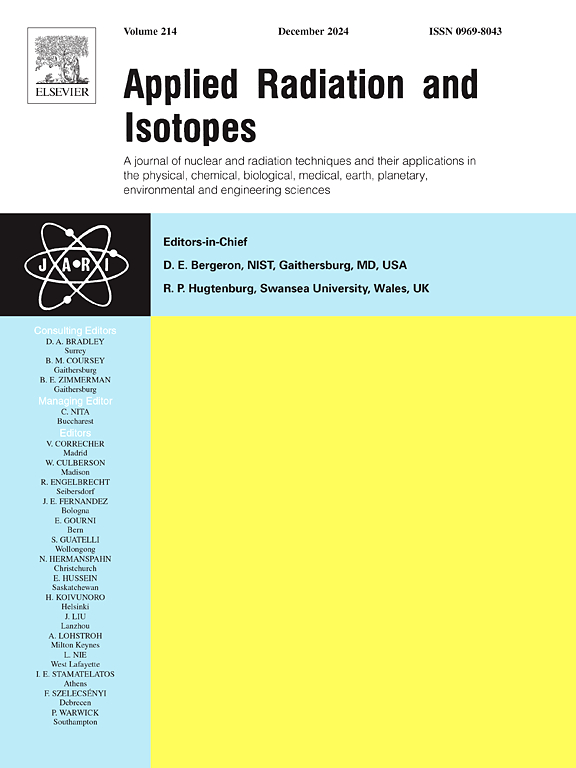Analysis of alpha induced secondary proton production in natNi-reactor structural material
IF 1.8
3区 工程技术
Q3 CHEMISTRY, INORGANIC & NUCLEAR
引用次数: 0
Abstract
Nickel is a crucial structural material in nuclear reactors due to its excellent thermal properties and corrosion resistance. In the reactor environment, high-energy alpha particles are produced and causing secondary interactions within the structural materials, leading to the formation of hydrogen gas within the structural material. This study explores the extent of hydrogen production due to alpha-induced reactions on natural nickel in the energy range of reactor interest. Experimental measurements of the Ni(, xp)61Cu cross-section were conducted using the stack foil activation method, providing new data for reactor gas formation estimation. Reactor material selection and construction rely on theoretical simulations using codes, so the accuracy, precision, and reproducibility of these codes are important. Theoretical predictions generated using TALYS 1.96 and EMPIRE-3.2.3 showed noticeable deviations from the experimental data, even after parameter optimization. Incorporating beta-decay channels in the EMPIRE-3.2.3 code improved the accuracy of gas formation predictions. The results are vital for evaluating reactor safety.

natni反应器结构材料中α诱导二次质子产生的分析
镍具有优良的热学性能和耐腐蚀性能,是核反应堆中重要的结构材料。在反应器环境中,产生高能α粒子,并在结构材料内部引起二次相互作用,导致结构材料内部形成氢气。本研究探讨了在反应堆感兴趣的能量范围内,由于α诱导反应对天然镍产生氢的程度。利用叠箔活化法对natNi(α, xp)61Cu的截面进行了实验测量,为反应器产气估算提供了新的数据。反应堆材料的选择和建造依赖于使用代码的理论模拟,因此这些代码的准确性、精密度和可重复性非常重要。使用TALYS 1.96和EMPIRE-3.2.3生成的理论预测与实验数据存在明显偏差,即使经过参数优化。在EMPIRE-3.2.3代码中加入β衰变通道提高了天然气形成预测的准确性。这些结果对于评估反应堆的安全性至关重要。
本文章由计算机程序翻译,如有差异,请以英文原文为准。
求助全文
约1分钟内获得全文
求助全文
来源期刊

Applied Radiation and Isotopes
工程技术-核科学技术
CiteScore
3.00
自引率
12.50%
发文量
406
审稿时长
13.5 months
期刊介绍:
Applied Radiation and Isotopes provides a high quality medium for the publication of substantial, original and scientific and technological papers on the development and peaceful application of nuclear, radiation and radionuclide techniques in chemistry, physics, biochemistry, biology, medicine, security, engineering and in the earth, planetary and environmental sciences, all including dosimetry. Nuclear techniques are defined in the broadest sense and both experimental and theoretical papers are welcome. They include the development and use of α- and β-particles, X-rays and γ-rays, neutrons and other nuclear particles and radiations from all sources, including radionuclides, synchrotron sources, cyclotrons and reactors and from the natural environment.
The journal aims to publish papers with significance to an international audience, containing substantial novelty and scientific impact. The Editors reserve the rights to reject, with or without external review, papers that do not meet these criteria.
Papers dealing with radiation processing, i.e., where radiation is used to bring about a biological, chemical or physical change in a material, should be directed to our sister journal Radiation Physics and Chemistry.
 求助内容:
求助内容: 应助结果提醒方式:
应助结果提醒方式:


